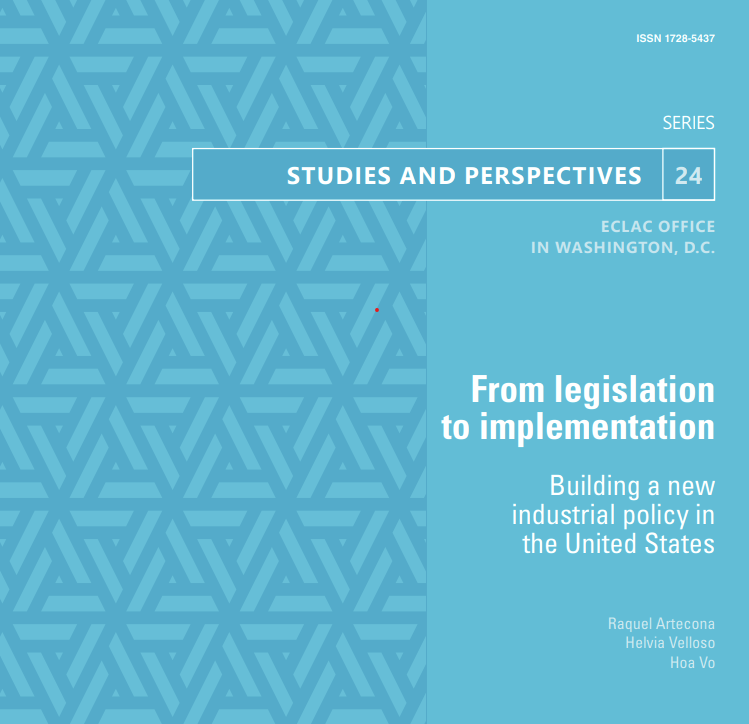From legislation to implementation: building a new industrial policy in the United States
Work area(s)
Topic(s)
This document examines the implementation strategies and execution challenges of three major pieces of legislation that were signed into law in the United States in late 2021 and in 2022.

Three major pieces of legislation that were signed into law in the United States in late 2021 and in 2022, provide more than US$ 2 trillion in authorized funding and incentives for up to ten years to rebuild the country’s infrastructure, accelerate the transition to a green economy, and strengthen the domestic semiconductor industry while promoting job growth, workforce development, and equity. The scale of these laws, given the level of funding required, their complexity, given the multiplicity of goals and the many participants involved, their accountability, and the risk of inequitable implementation, with some local governments and communities not fully positioned to take advantage of the laws’ incentives, present significant challenges to their implementation. An additional challenge lies in creating the institutionality required to ensure that the changes are long-term and not subject to the cyclicality of government changes. Although mostly directed to activities within the United States, the laws’ execution is expected to influence the policies of countries around the world, including in Latin America and the Caribbean. From a worldwide perspective, these laws may create opportunities but can also leave some smaller players behind.
Subregional headquarter(s) and office(s)
Country(ies)
-
United States